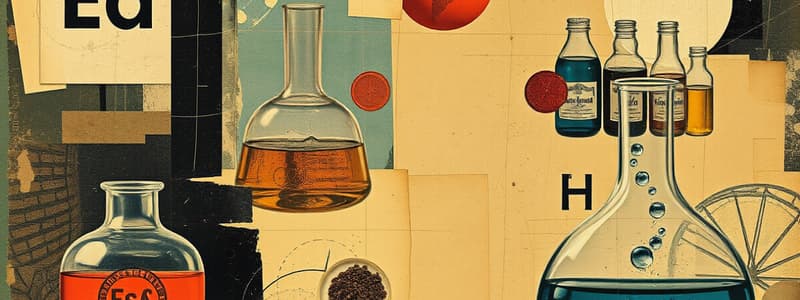Podcast
Questions and Answers
Metals are generally brittle and break easily rather than bending.
Metals are generally brittle and break easily rather than bending.
False (B)
Nonmetals can exist in solid, liquid, or gas states.
Nonmetals can exist in solid, liquid, or gas states.
True (A)
Metalloids are good conductors of electricity similar to metals.
Metalloids are good conductors of electricity similar to metals.
False (B)
Nonmetals typically have a shiny, reflective luster.
Nonmetals typically have a shiny, reflective luster.
Metalloids can be used in electronics because they have semiconductor properties.
Metalloids can be used in electronics because they have semiconductor properties.
Flashcards are hidden until you start studying
Study Notes
Elements Classification
- Elements are classified into three categories: metals, nonmetals, and metalloids, each with unique properties.
Metals
- Typically solid at room temperature.
- Known for malleability, allowing them to be hammered into thin sheets.
- Exhibit ductility, enabling them to be stretched into wires.
- Possess a shiny, reflective luster.
- Excellent conductors of heat and electricity, useful in various applications.
Nonmetals
- Can exist in solid, liquid, or gaseous states.
- Usually have dull, non-reflective surfaces.
- Characterized as brittle, breaking easily instead of bending.
- Poor conductors of heat and electricity.
- Some nonmetals, like noble gases, exhibit non-reactivity.
Metalloids
- Solid at room temperature, displaying properties of both metals and nonmetals.
- Can have either shiny or dull appearances.
- Generally brittle, similar to nonmetals.
- Function as semiconductors, conducting electricity better than nonmetals but not as efficiently as metals, making them important in electronics.
Studying That Suits You
Use AI to generate personalized quizzes and flashcards to suit your learning preferences.




